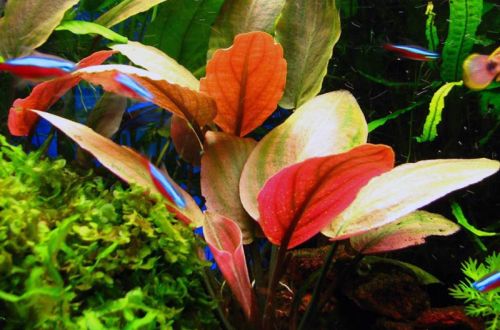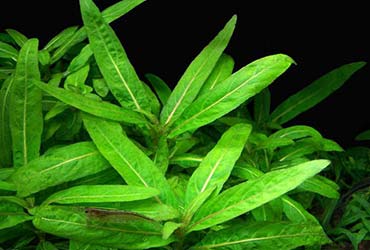
Lagenander Meebold
Lagenandra Meebold, scientific name Lagenandra meeboldii. The plant comes from the highlands of southern India at altitudes of 1200 meters above sea level, where it grows under the canopy of a tropical forest along the banks of shaded streams, swamps and other bodies of water.

This is a very variable look. There are at least three varieties found in aquariums, differing in size, color, and leaf shape.
“Red” form (first image) – forms somewhat convex oblong ovoid leaves. The edge of the leaf blade is slightly wavy. When submerged and grown in nutrient-rich soil, the leaves turn red. The height of the bush is usually 15-20 cm.
The “green” form (second image) is identical in appearance to the “red” variety except for the color and size of the leaves. Under similar growing conditions, this form grows larger (30 cm or more) and forms longer petioles.
The “pink” form is a relatively new variety that first appeared in the US and was imported to Europe in 2013. Old leaves take on a pinkish tint. It differs from other varieties in its large size – the bush grows over 45 cm, therefore it is suitable only for large aquariums.
Common to all varieties is young leaves twisted into a tube and the presence of a creeping rhizome, similar to Anubias, on which bushes are formed with leaves collected in a rosette. But unlike the latter, Lagenander Meebold cannot be fixed on snags and stones, but grows exclusively on the ground.





